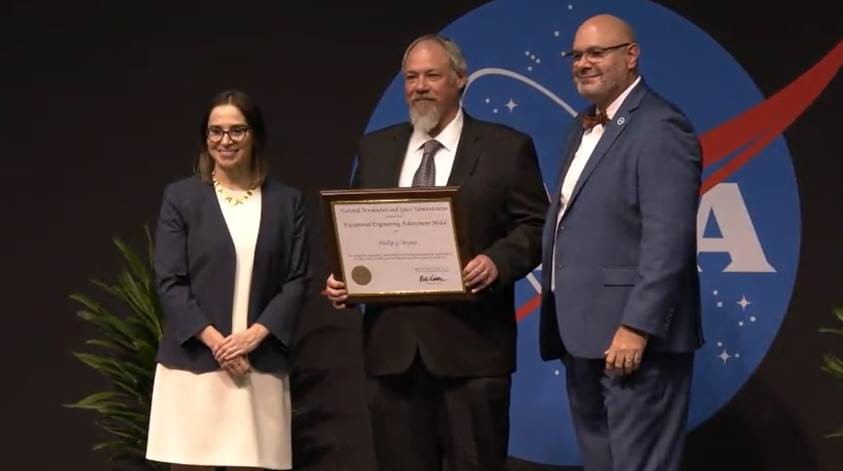HUNTSVILLE, Ala. — August 16th, 2023 — Phillip Bryant, a Tec-Masters team member, has earned NASA’s Exceptional Engineering Achievement Medal for his distinguished work on the Microgravity and Life Sciences Glovebox Project (MLSG) for the ISS. He’s been instrumental in the test and sustaining engineering of the Life Science Glovebox (LSG) and the Microgravity Science Glovebox (MSG), both vital rack-level ISS facilities.
The LSG and MSG ensure safe containment, shielding experiments from ISS contamination and protecting crew from hazardous materials. Specifically, the LSG focuses on bio-isolation and waste control, supporting various biological experiments. Conversely, the MSG offers an array of utilities like power, data, and vacuum to a myriad of experiments.
As the Lead Test Engineer for LSG and MSG, Bryant ensures the units’ functionality, both in space and on Earth, handles Payload-to-Facility and Facility-to-ISS engineering, and provides real-time engineering support for anomalies. Two of his notable contributions include:
In 2017, he devised an LSG filter adapter system allowing MSG filters to fit in the LSG. This innovation facilitated uniformity across the gloveboxes, saving NASA two million dollars over the ISS’s lifespan, all while adhering to ISS safety norms.
In 2018, Bryant proposed a shift from a custom LSG Video Upgrade Equipment (VUE) to a Commercial-Off-The-Shelf (COTS) camera system, using already qualified on-orbit hardware and COTS products. This change not only saved costs but also elevated the video quality by up to 50%. Moreover, this versatile camera system can function anywhere on the ISS with laptop compatibility, enhancing operational efficiency and video quality.
Bryant’s expertise in integrated engineering testing for the MSG and LSG is laudable. He customizes each test for distinct payload requirements, paving the way for crucial modifications during hardware developmental or verification testing. This approach translates to significant manpower, time, and cost savings for the ISS program.
His profound understanding of the LSG and MSG facilities, combined with his innovative engineering methods, has made him a go-to advisor in the ISS program. Bryant’s efforts have been central to the establishment of two premier ISS research facilities.

